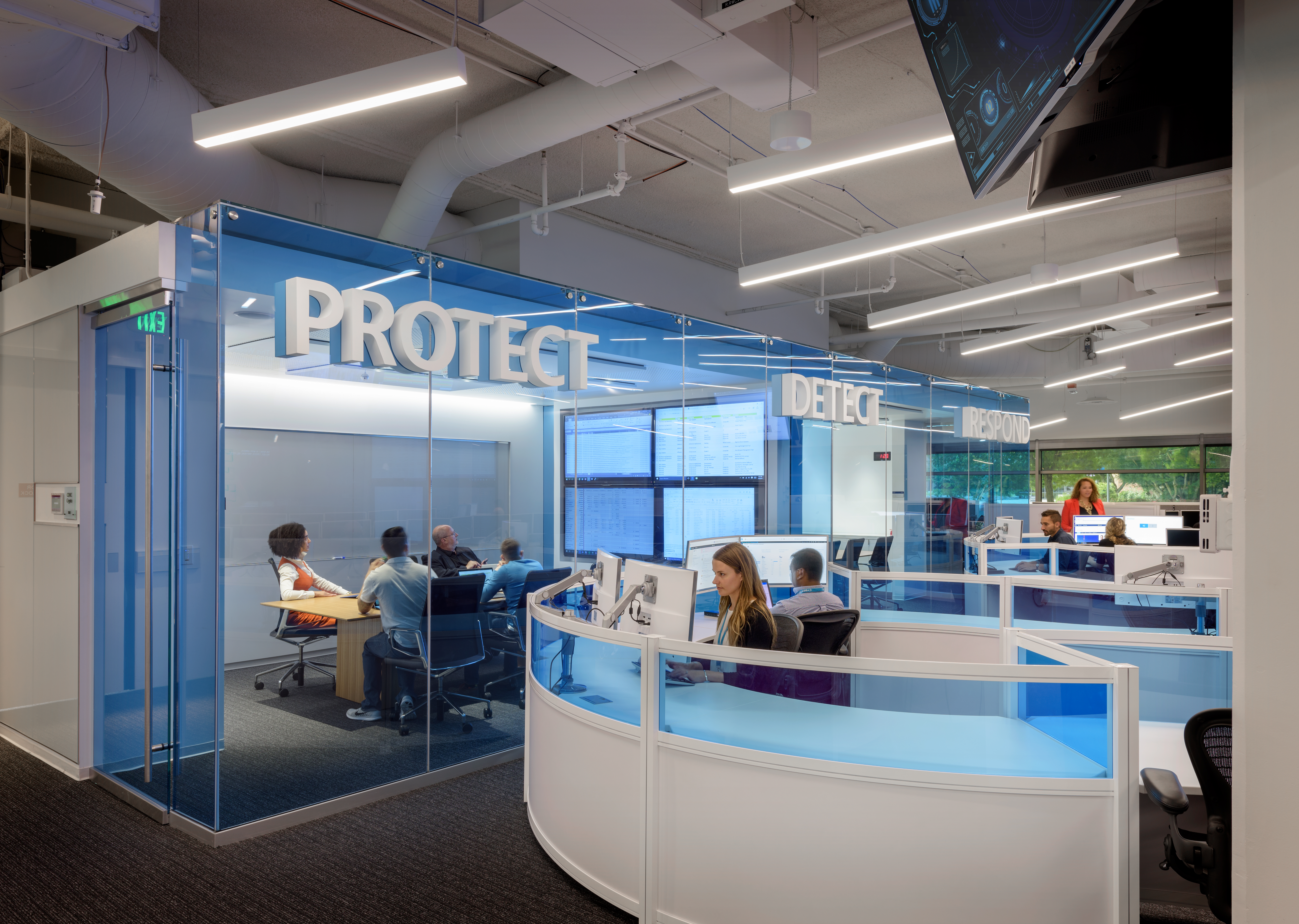
How to secure your organisation in the digital workplace

In the modern digital workplace, a mobile-first mentality sees employees constantly finding new ways to work.
But the more solutions, systems, and data connecting your organisation, the more risk there is to security. And the rise of remote workers, who rely on cloud-based communications, is forcing sysadmins to remain extra vigilant.
Through Azure and Microsoft 365, you’ll possess the best tools to oversee all security threats. Defend your organisation, protect your IT infrastructure, and keep your employees secure, whether they’re in the office or on the go.
Control access
It’s critical only authorised users can access your network. An employee that loses a device or clicks a malicious link can leave your whole business vulnerable.
You also don’t want to leave users in limbo, with offline stacked systems requiring multiple logins – each unable to talk to each other, and each increasing the threat to your security.
Microsoft Azure features an Active Directory (AD). This simplified, centralised identity and access management service offers much greater control over who can access your business apps. It has three main functions:
- Authorise sign-ins
- Protect user identities and credentials
- Enable access to internal and external resources
IT administrators can use this service to precisely control who within the workplace has access to business apps and resources. The Azure Active Directory lets you adds an additional layer of security. For instance, create a requirement that forces two-factor authentication for anyone logging into an app or configure password-less security key sign in.
Through cloud capabilities, the AD also bridges the gap between online Office 365 apps and your on-premises Windows Server AD. The directory automates access to accounts and retaining existing passwords to keep users securely online.
The easiest way to achieve this is to synchronise accounts from the on-premises directory to the Azure AD. While this means that the Windows AD remains the ‘dominant’ source for accounts, Azure authenticates all cloud-based logins.
Detect threats
Cyber-security fears rank high for any organisation. Staying online is crucial and it’s frustrating if a hacker knocks out your systems in a heartbeat. The Active Directory is designed to proactively detect threats and protect all users.
Cyber-attacks take many different forms, from phishing to brute force. The methods may vary, but the result is always the same: information is compromised. And, in the age of GDPR, few organisations can afford that.
So, let’s look at how Azure’s built-in security features deals with one of the most common threats: malware.
The attack begins with malware attempting installation on a user’s device. At this point, multiple tools work together and start to act…
- Exchange Online Protection blocks known malware and viruses
- Office 365 Advanced Threat checks all files sent to the computer for unknown malware
- Windows and Office is then able to update protection against the malware
- Windows Defender Application Guard protects against internet attacks when using Microsoft Edge
- Windows 10 Device Guard lets you define what trusted applications are allowed to run
Should an employee click a dodgy link, it’s still not game over for your IT security. At this point, you can rely on…
- Windows Defender Antivirus to scan for any threats
- Windows Defender SmartScreen to check the ‘reputation’ of new apps
- Windows Firewall to protect access to your device
- Securing Privileged Access Roadmap to show you how to protect privileged access workstations
At this stage, Azure deploys a number of tools designed to keep your data and your digital workplace secure. While Cloud App Security locks down suspicious user accounts, tools like Intune Mobile Application Management and Office 365 DLP prevents data being moved from the digital environment. Azure Information Protection and Azure Rights Management add further protection, encrypting sensitive files. Finally, Azure Backup provides a way to restore your data from the cloud.
At no point during a cyber-attack are you left alone.
Privacy by design
There’s another reason why digital workplace security is important: your reputation. In an age where data leaks and cyber-attacks dominate headlines almost daily, your customers are hyper-aware of data privacy. If you can’t guarantee the security and privacy of their data, you lose their trust and custom.
When implementing any new system across your organisation, start by identifying how you’ll protect all the data you hold. Design your entire infrastructure around this idea. The sooner you develop a system with ‘privacy by design’ in mind, the sooner you’ll be able to work out potential problems
It’s a core part of the GDPR regulations – so not adhering to the ‘privacy by design’ principle means you could earn yourself a major fine. But it’s also plain good business practice.
In our fast-paced digitally-driven world, going ‘dark’ is costs time, money, customers, and your hard-earned reputation. And, for smaller businesses, it’s a death sentence. Reliability counts, no matter what industry you’re in. That’s why Microsoft Azure works tirelessly to protect you. It’s designed for the modern digital workplace and a new way of working – just like your business is.
Find out more
Microsoft Learn: Explore security, responsibility, and trust in Azure
Microsoft Learn: Discover how to secure your organization with Microsoft 365’s intelligent security




